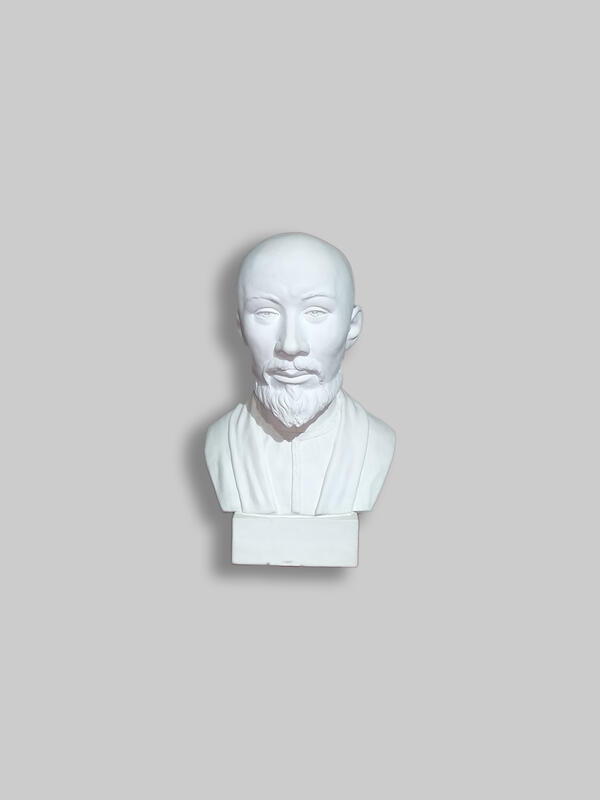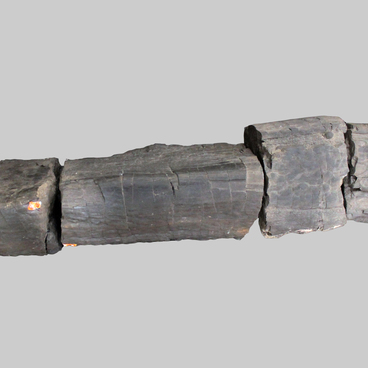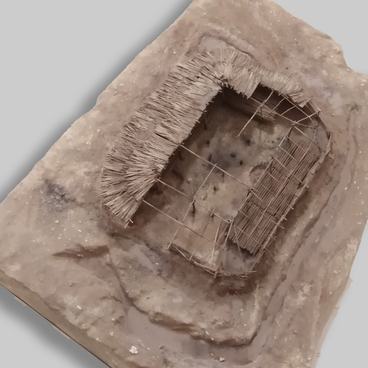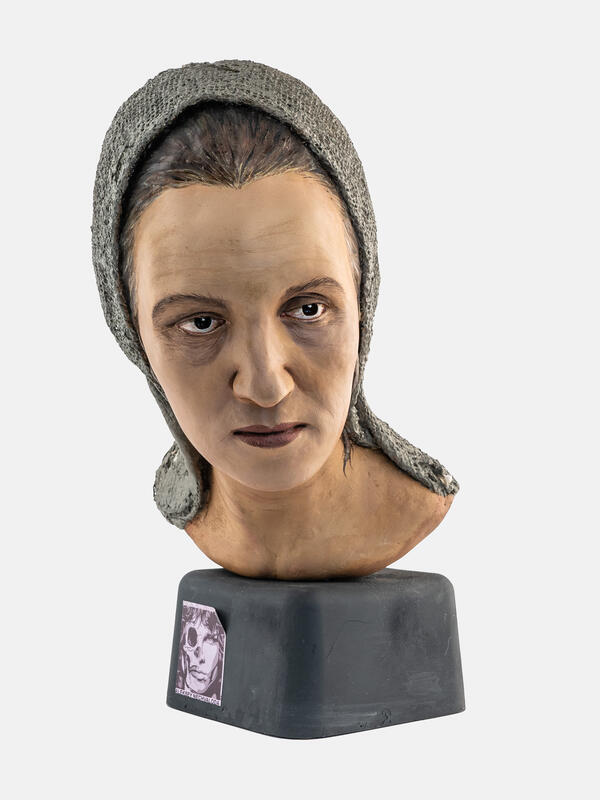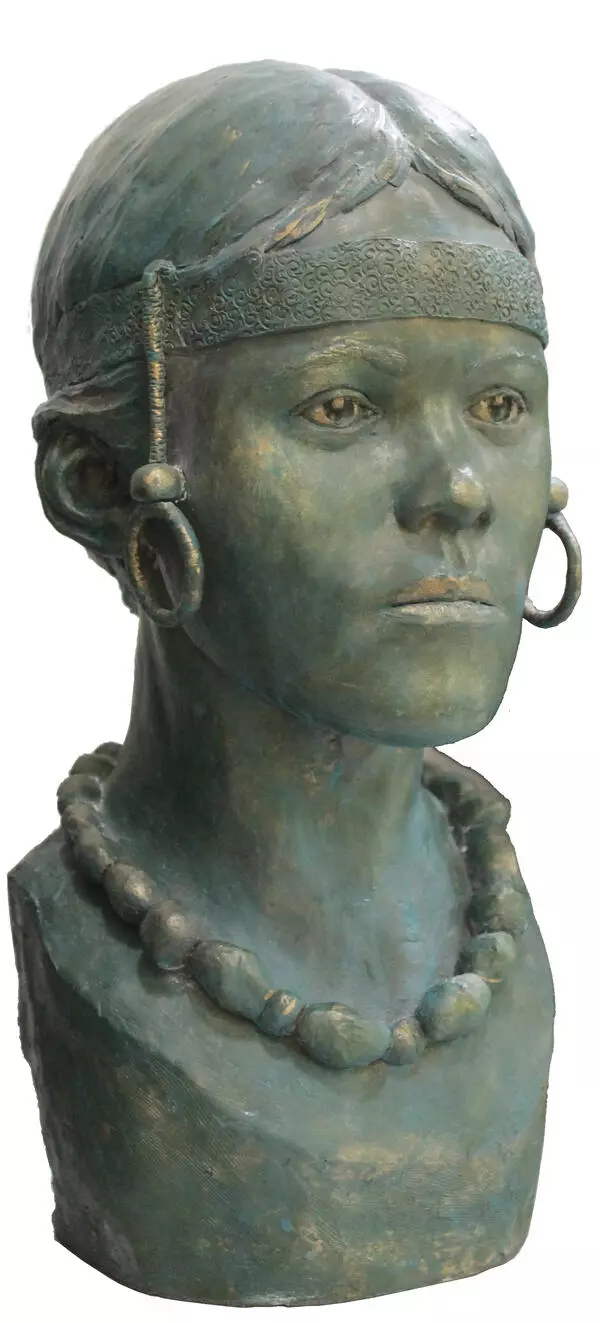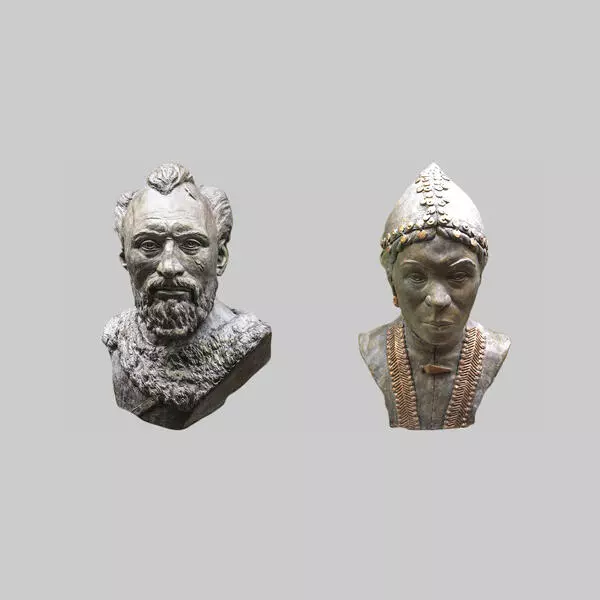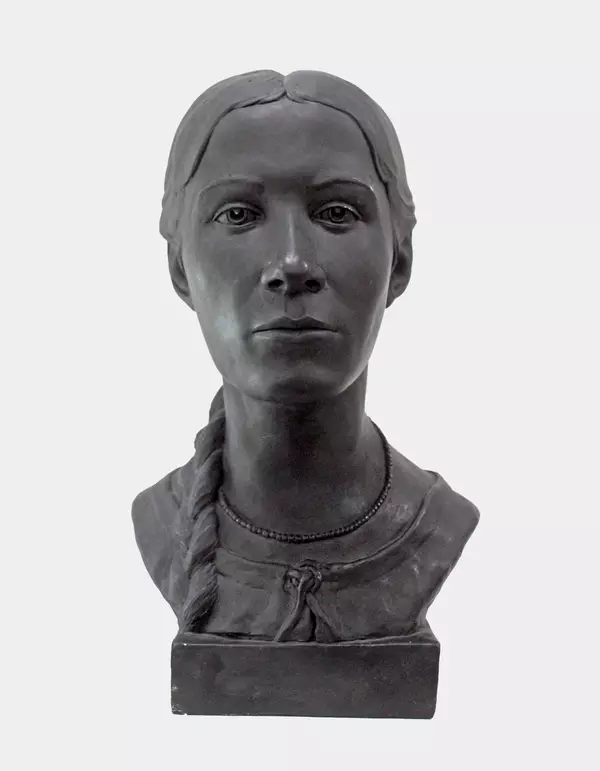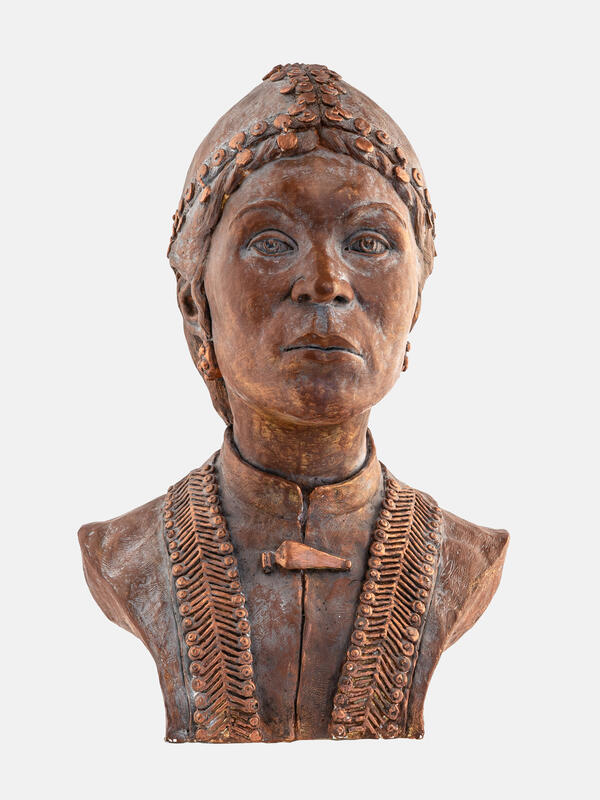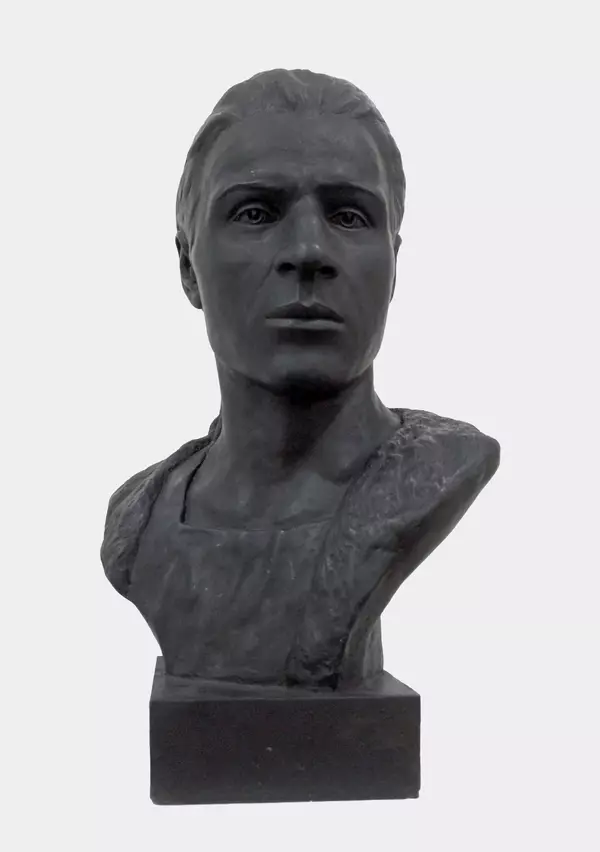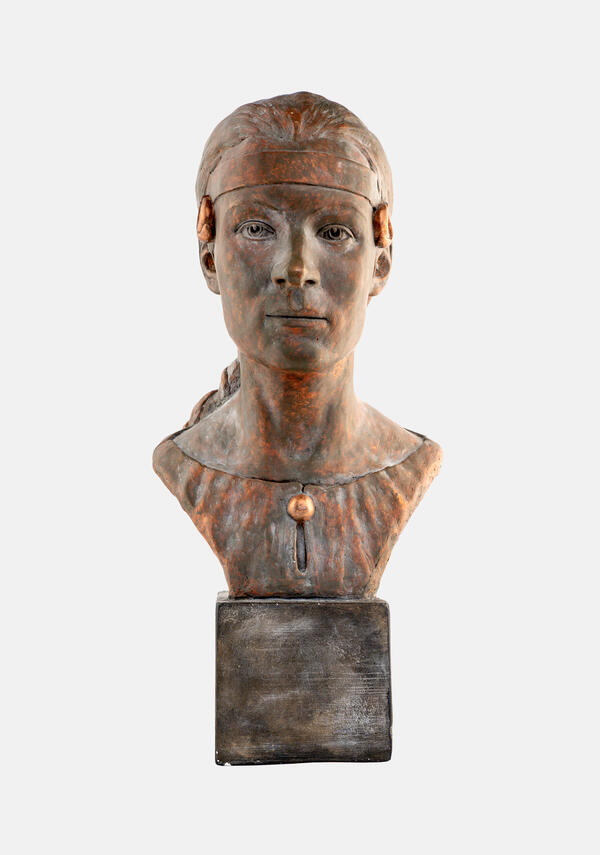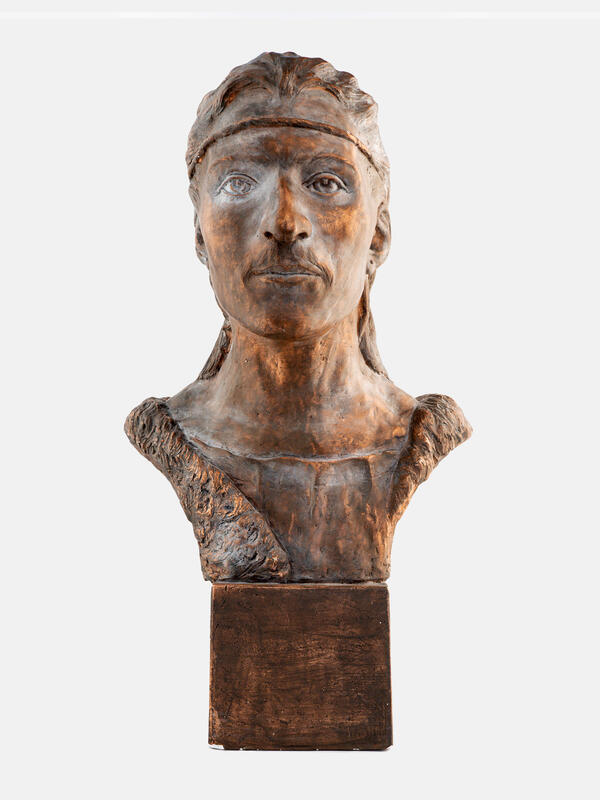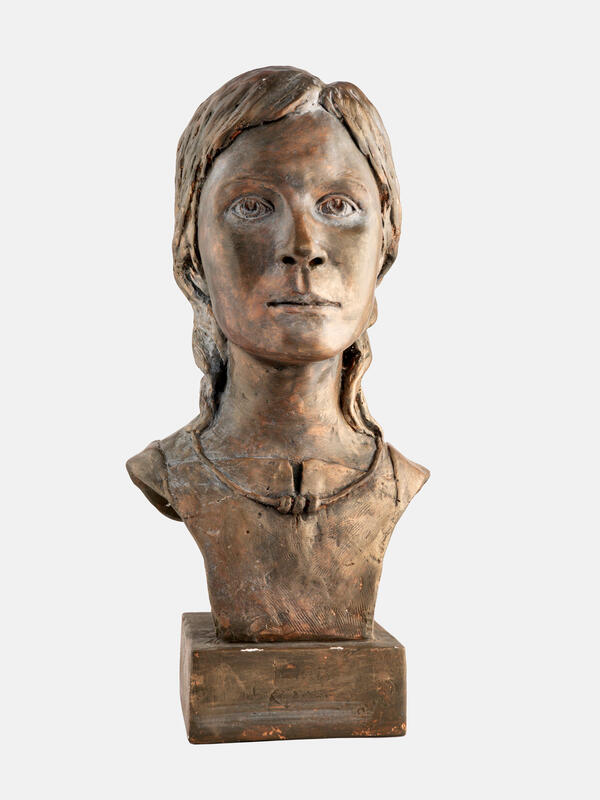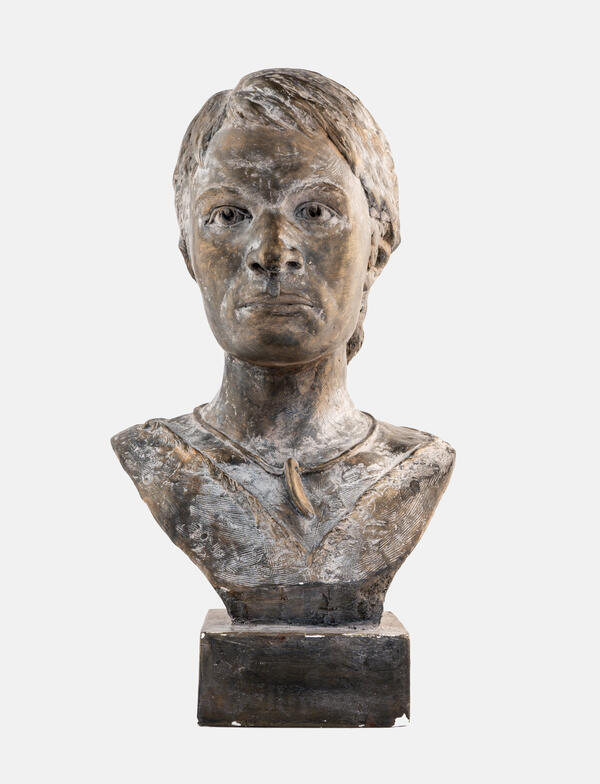Huseyn-bek (Muslim judge-qadi) Sculptural anthropological facial reconstruction done from the skull from the Huseyn-bek Mausoleum.
The sculptural anthropological facial reconstruction is from the skull of Huseyn-bek — a man at rest in the Huseyn-bek Mausoleum who was the first Islamic spiritual leader in Bashkortostan — and was performed by the
Russian anthropologist Alexei Nechvaloda. The Huseyn-bek Mausoleum is an archeological monument that dates from the XIV century. It is located on the southeastern outskirts of the village of Chishmy in the Republic of Bashkortostan, in the center of the ancient Akzirat Cemetery, which is located on the left bank of the Dema River.
The first mention of this monument dates back to the 18th century; with detailed information about the mausoleum published in 1848 and then again in 1956. In 1911, the mausoleum was renovated on instruction from the Ufa mufti.
Excavations led by the Russian historian and archaeologist Gennadiy Garustovich, which took place in 1985 inside the mausoleum, revealed nine graves located in rectangular pits in which an adult man, woman, and several children were buried. The deceased, placed in tabut coffins, lay on their backs, with their heads to the west and faces turned to the south — towards Mecca. Above the graves where the adults were buried, there were alabaster gravestones, and where Huseynbek was interred there was a slab with an epitaph.
The total height of the mausoleum is about 5 meters from the level where the surface is now, the height of the walls is about 2 meters, and the dome is almost 3 meters high. The walls are strictly oriented toward the four cardinal directions. The arched entranceway is located in the southern facade. The windows are ‘punched’ through the western, eastern, and northern planes; and they have semicircular ends at the top.
The sculptural anthropological facial reconstruction is from the skull of Huseyn-bek — a man at rest in the Huseyn-bek Mausoleum who was the first Islamic spiritual leader in Bashkortostan — and was performed by the
Russian anthropologist Alexei Nechvaloda. The Huseyn-bek Mausoleum is an archeological monument that dates from the XIV century. It is located on the southeastern outskirts of the village of Chishmy in the Republic of Bashkortostan, in the center of the ancient Akzirat Cemetery, which is located on the left bank of the Dema River.
The first mention of this monument dates back to the 18th century; with detailed information about the mausoleum published in 1848 and then again in 1956. In 1911, the mausoleum was renovated on instruction from the Ufa mufti.
Excavations led by the Russian historian and archaeologist Gennadiy Garustovich, which took place in 1985 inside the mausoleum, revealed nine graves located in rectangular pits in which an adult man, woman, and several children were buried. The deceased, placed in tabut coffins, lay on their backs, with their heads to the west and faces turned to the south — towards Mecca. Above the graves where the adults were buried, there were alabaster gravestones, and where Huseynbek was interred there was a slab with an epitaph.
The total height of the mausoleum is about 5 meters from the level where the surface is now, the height of the walls is about 2 meters, and the dome is almost 3 meters high. The walls are strictly oriented toward the four cardinal directions. The arched entranceway is located in the southern facade. The windows are ‘punched’ through the western, eastern, and northern planes; and they have semicircular ends at the top.
The arched ends for the windows and the entranceway are decorated with a casing of wedge-shaped stonework.
Anthropologist Rinat Yusupov, after examining the skull from the burial site that had a slab with an epitaph for Huseyn-bek above it, noted that the deceased belonged to the anthropological type typically present in the Central Asian interfluve. Huseyn-bek and his father, Omarbek, were natives of Central Asia.
The anthropological reconstruction is fashioned from tinted gypsum. The anthropologist wrote that to create the appearance along the skull, a whole range of techniques and methods was used that incorporate the scientific developments by the anthropologist Mikhail Gerasimov. His technique involves restoring the appearance drawing on the skeletal remains as a foundation. In this work, prosthetic eyeballs made of plastic were used. This was done to achieve the effect of a ‘live face’.
The skull from a burial site in the Huseyn-bek Mausoleum was scanned using 3D technology, and a replica was made using 3D printing.
Anthropologist Rinat Yusupov, after examining the skull from the burial site that had a slab with an epitaph for Huseyn-bek above it, noted that the deceased belonged to the anthropological type typically present in the Central Asian interfluve. Huseyn-bek and his father, Omarbek, were natives of Central Asia.
The anthropological reconstruction is fashioned from tinted gypsum. The anthropologist wrote that to create the appearance along the skull, a whole range of techniques and methods was used that incorporate the scientific developments by the anthropologist Mikhail Gerasimov. His technique involves restoring the appearance drawing on the skeletal remains as a foundation. In this work, prosthetic eyeballs made of plastic were used. This was done to achieve the effect of a ‘live face’.
The skull from a burial site in the Huseyn-bek Mausoleum was scanned using 3D technology, and a replica was made using 3D printing.

